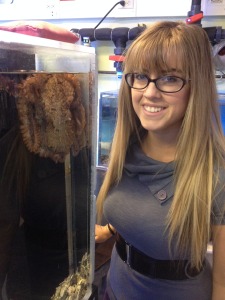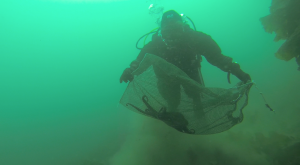
Zale Parry is an internationally renowned pioneer of the early days of skin and scuba diving. As early as the 1950s, Parry was an underwater equipment tester and (the only woman) executive at Scientific Underwater Research Enterprises (SURE), founded by her husband, Parry Bivens, M.D., who designed and built hyperbaric chambers. In 1954, Parry set a woman’s deep diving record at 209 ft/64 meters in the open sea as part of an experiment to test the Hope-Page non-return valve mouthpiece, which from that day forward became a standard feature in all regulators. Parry was the third female instructor to graduate from the L.A. County UICC program and served for many years as a Red Cross Water Safety Instructor. A NOGI Fellow and the Ambassador at Large for the Academy of Underwater Arts and Sciences, Parry continues to lecture around the United States. As a member of the scholarship selection committee, she had this to say about Anne Benolkin:

